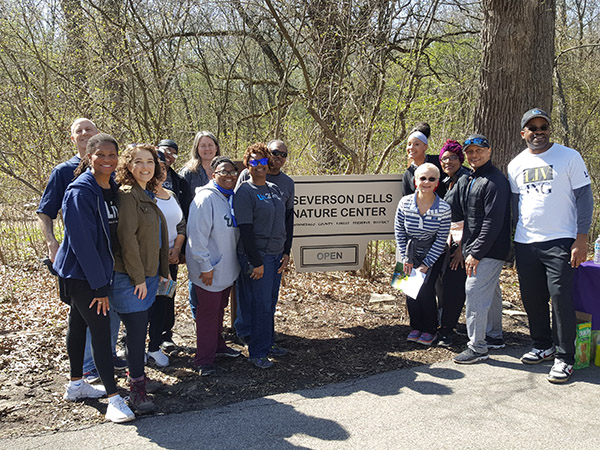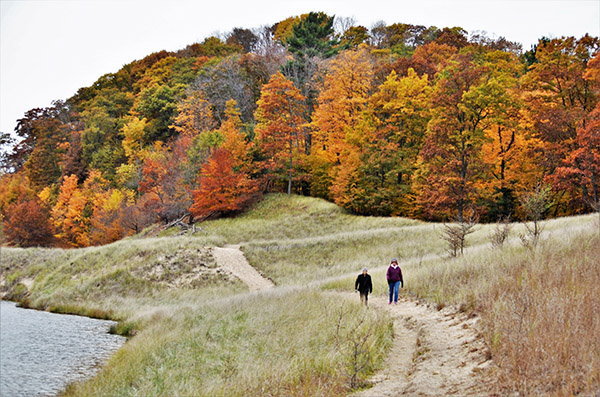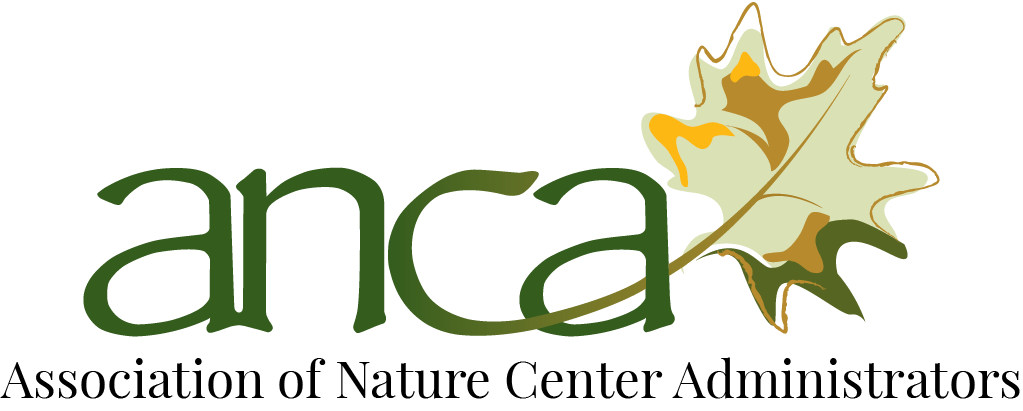by Asa Duffee, ANCA Marketing & Communications Coordinator
The health benefits of spending time in nature are myriad: not only does it improve your emotional wellbeing, but it also reduces your blood pressure and supports your immune system (in addition to other advantages). It makes sense, then, that nature enthusiasts — and if you’re on the ANCA website, you’re probably one of these — would have a natural alliance with medical professionals and institutions. Yet such alliances don’t appear out of thin air, so how do they develop in the real world?
Jamie Johannsen, Marketing and Community Relations Manager for the Forest Preserves of Winnebago County in Illinois, has been working on such a question for quite some time. Like many nature education organizations, the Forest Preserves have an annual program that encourages their community to spend time outside to reap the health benefits of nature. This program, called Get Outside Get Healthy, includes a passport booklet and a diverse set of activities, such as guided hikes, yoga, and archaeology. If the booklet is completed, participants are eligible for a prize.
Parts of Get Outside Get Healthy have involved healthcare professionals, but that involvement didn’t necessarily have institutional support. “Individuals here and there were interested and would participate in an event occasionally but we didn’t have an ongoing program or a formal partnership until this year,” Johannsen said.
While that organizational relationship was lacking previously, the Forest Preserves’ efforts did not go unnoticed. SwedishAmerican, a local healthcare system, caught wind of their efforts to improve community health, and contacted Jamie to see how they might work together.
What resulted were monthly walks at various forested areas around the county, including ANCA member Severson Dells Nature Center. These events, called Walk with Swedes, always featured a medical professional as well as special activities. The hospital promoted the walks to both employees and patients, and typically had over forty people in attendance.

Visitors attend “Walk with Swedes” at Severson Dells Nature Center in Rockford, Illinois.
Johannsen was pleased with those numbers, but also with seeing new faces. “They weren’t the same people that are coming to all of our guided bird walks, they weren’t the ‘nature nerds,’” she said. On an organizational level, too, she now personally knows a variety of individuals within the health care system who could be allies in the future. “I hope to build on it in the future.”
Another type of medical partnership is based on a “nature prescription,” a concept that is gaining popularity. In this case, a doctor will literally write out a prescription for a patient to spend time in nature — say, for example, at least an hour each week.
These nature prescriptions are perhaps most well-known through Park Rx America, which connects medical professionals with publicly-accessible parks and natural areas for the benefit of patients. Park Rx America’s platform uses a map with detailed information on such parks, so that a doctor can inform patients about natural areas closest to them and best-suited for their needs.
ANCA member Ottawa County Parks and Recreation in Michigan recently partnered with a local doctor to make nature prescriptions accessible for local healthcare professionals.
“What we did with the PHO [physician-hospital organization] was work with them to get not only our county parks in, but also to reach out to the other municipalities in the area and get their parks in as well,” said Jessica VanGinhoven, Communications Specialist for Ottawa County Parks. “Certainly, as a county parks system we want people to go to county parks, but there’s lots of city parks and township parks that are maybe more convenient for patients. And the end goal is really getting patients outside.”

Autumn at Ottawa Sounds County Park in Ferrysburg, Michigan. Photo by Mike Lozon.
This effort required two volunteers to enter the park data and ensure accuracy for areas outside of the county parks system. “It was a lot of upfront, get all this data in. After that, if you’re using the Park Rx America platform, once they’re in, doctors can prescribe things at will,” VanGinhoven said. “Any maintenance that we do is updating the information and making sure that any new trails that we add are added into the system, or if we keep pictures in there, [such as] trail maps ... that stays updated.”
The initial prescription rate has been slower than expected since the program began in May, but VanGinhoven is optimistic about what the prescriptions can do for the community. And while the doctors are writing the prescriptions, VanGinhoven wants to focus on “making sure people are aware that this exists,” she said. “It’s great if a doctor is able to prescribe it, but it’s also great as a patient if you’re at your doctor’s office, to say ‘Hey have you heard of this?’ We think this would be really positive, the fact that this relationship goes both ways.”
At the 2019 ANCA Summit, keynote speaker Nina Simon discussed the importance of partnerships at the Santa Cruz Museum of Art and History where she was executive director, noting that the museum went from roughly 50 partnerships to over 2,000 during her tenure — which she connected to a nearly nine-fold increase in annual attendance at the museum for the same time period. Importantly, those partnerships enabled not only more visitors, but also more audiences than the museum had seen before.
Similarly, both Johannsen and VanGinhoven spoke to the significance of their organizations’ respective medical partnerships. For Johannsen, it was important to make connections with healthcare professionals, which may enable nature prescriptions in the future. “I can talk to the community outreach people all day but if they don’t know who in their program is interested in this ... then it’s just the marketing people,” she said. “Now they actually have some physicians that took part and see the potential.”
VanGinhoven agreed. “As word starts to spread through your network, that idea can kind of catch fire. An example we have of that is that we’re working on a bunch of campaigns and someone on our campaign committee is really well-connected to a hospital system in a different area … so she’s going to work on our behalf to try to roll it out in another area of the county,” she said. “There’s a lot of power in the network of the organization.”
—
Note: This article was originally published in the Fall 2019 issue of "Directions," the ANCA journal. Members can always access the full issue via the member portal. If you're curious about membership, see our membership levels.

